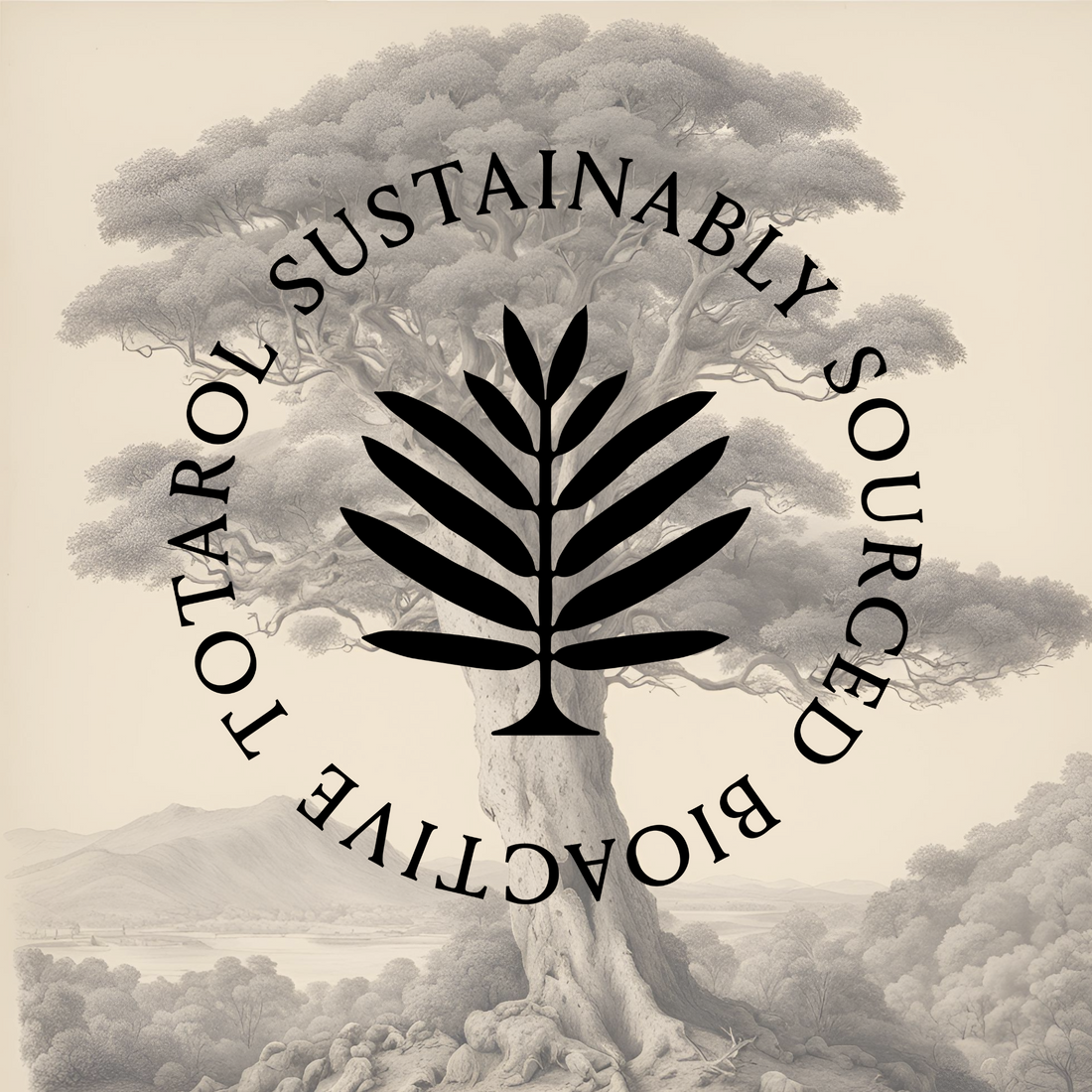
Totarol™: Nature’s Antimicrobial Hero in Oral Care
When you think of oral health innovation, you probably expect lab-made molecules. But what if the most powerful ingredient is pulled directly from a 1,000-year-old tree? Meet Totarol™, the botanical powerhouse redefining modern oral care.
What Is Totarol™?
Totarol™ is a natural phenolic diterpene derived from the heartwood of the Podocarpus totara, an iconic New Zealand native tree Sacred to the Māori for its durability and medicinal uses. This compound exhibits remarkable antimicrobial and biofilm-disrupting properties, and is the active agent behind the Totara’s historic resistance to rot.
How Totarol™ Works in the Mouth
Totarol™ selectively targets harmful bacteria such as Streptococcus mutans and Porphyromonas gingivalis, the key culprits behind cavities and gum disease. It disrupts bacterial cell membranes, inhibits respiration and cell division, and interferes with FtsZ polymerization, a process essential to bacterial replication.
Unlike broad-spectrum antimicrobials, Totarol™ spares beneficial microbes, preserving the balance of your oral microbiome - making it a gentle yet elite defender.
Antimicrobial Precision
Totarol™ has been shown in laboratory studies to coat surfaces such as dental implants and provide contact-killing effects against strains like S. gordonii and mixed bacterial biofilms within 4–24 hours.
Additional studies show Totarol™ is effective even against drug-resistant strains like Methicillin-resistant Staphylococcus aureus (MRSA) and Vancomycin-resistant Enterococci (VRE), achieving inhibitory effects at low concentrations while maintaining biocompatibility.

This places Totarol™ at the forefront of precision-targeted oral antimicrobials - especially vital in a world where antibiotic resistance is a growing threat.
Sourcing With Purpose: Respecting Totara and Māori Wisdom
But Totarol™’s power isn’t just molecular - it’s ethical.
We source our Totarol™ from a small, trusted partner in New Zealand who only harvests from fallen Totara trees such as reclaimed fence posts, telephone poles and housing construction. No living trees are felled. No sacred sites are touched. This practice not only honors the ecological role of the Totara but respects the Māori cultural reverence for these ancient beings.
Totara trees are known to live over a thousand years, and Māori tradition teaches that they must be approached with respect. We believe deeply in that stewardship. This is not just about sustainability - it’s about relationship.
Why Totarol™ Leads the Formula
In MoreGood Gum™, Totarol™ acts as the first wave of defense in our bioactive synergy. It clears a path by disabling the worst bacteria, allowing our other ingredients to get to work:
- Zinc Citrate: binds sulfur compounds that cause bad breath, reduces inflammation, and helps eliminate pathogens associated with gum disease
- Hydroxyapatite: a biomimetic mineral that actively remineralizes tooth enamel
- Xylitol: starves sugar-loving bacteria while supporting a neutral pH
- MCT Oil: helps emulsify and distribute all ingredients across the mouth’s surfaces, while soothing soft tissue
Totarol™ isn’t just an ingredient. It’s the spark that activates MOreGood's LiquidCore™ advantage.
References
-
Short, W. F. & Stromberg, H. (1937). Totarol: Phenolic Diterpene from Totara Tree.Extracted Totarol from Podocarpus totara heartwood; key early research.
👉 PubChem–Cayman Chemical insert sciencedirect.com+15cdn.caymanchem.com+15en.wikipedia.org+15landscapeplants.oregonstate.edu+3pubmed.ncbi.nlm.nih.gov+3en.wikipedia.org+3 - Extracted Totarol from Podocarpus totara heartwood; key early research.
👉 PubChem–Cayman Chemical insert sciencedirect.com+15cdn.caymanchem.com+15en.wikipedia.org+15landscapeplants.oregonstate.edu+3pubmed.ncbi.nlm.nih.gov+3en.wikipedia.org+3 -
Nicolson, K. et al. (1992). Antibacterial activity of Totarol against Streptococcus mutans.Demonstrated Totarol's efficacy against major oral pathogens.
👉 ResearchGate summary pdfs.semanticscholar.org+1frontiersin.org+1pubmed.ncbi.nlm.nih.gov+1en.wikipedia.org+1researchgate.net+1pmc.ncbi.nlm.nih.gov+1 - Demonstrated Totarol's efficacy against major oral pathogens.
👉 ResearchGate summary pdfs.semanticscholar.org+1frontiersin.org+1pubmed.ncbi.nlm.nih.gov+1en.wikipedia.org+1researchgate.net+1pmc.ncbi.nlm.nih.gov+1 -
Xu, Z. et al. (2020). Application of totarol as natural antibacterial coating on dental implants for prevention of peri-implantitis. Mater Sci Eng C Biol Appl, 110:110701.
👉 PubMed abstract pmc.ncbi.nlm.nih.gov+15pubmed.ncbi.nlm.nih.gov+15mmrjournal.biomedcentral.com+15 -
Turner, R. et al. (2021). Biofilm inhibition by Totarol on drug-resistant oral pathogens.Highlighted Totarol's effectiveness against resistant strains and biofilms.
👉 PMC summary of antimicrobial strategies pdfs.semanticscholar.org+2ouci.dntb.gov.ua+2en.wikipedia.org+2pmc.ncbi.nlm.nih.gov - Highlighted Totarol's effectiveness against resistant strains and biofilms.
👉 PMC summary of antimicrobial strategies pdfs.semanticscholar.org+2ouci.dntb.gov.ua+2en.wikipedia.org+2pmc.ncbi.nlm.nih.gov -
Tonetti, M. S. & Van Dyke, T. E. (2013). Periodontitis and atherosclerotic cardiovascular disease: consensus report. Journal of Clinical Periodontology, 40(S14):S24–S29.
👉 PubMed abstract journalimplantdent.springeropen.com+11pubmed.ncbi.nlm.nih.gov+11researchgate.net+11

 https://moregoodgum.com
https://moregoodgum.com
